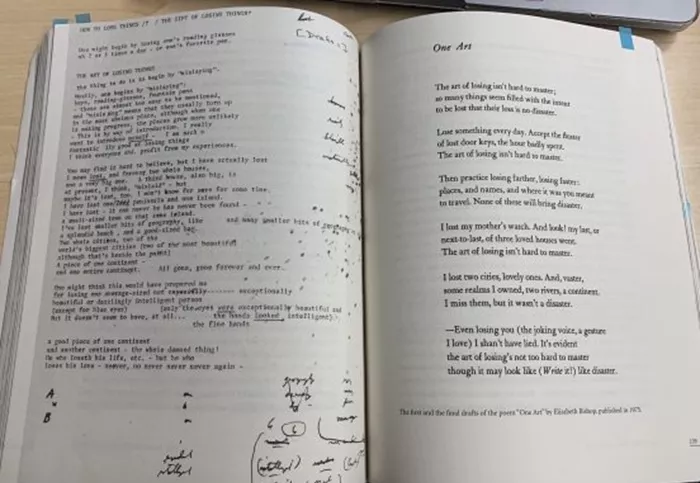Welcome to Poem of the Day – One Art by Elizabeth Bishop
Elizabeth Bishop’s One Art is a poignant and meditative poem that explores the theme of loss. At first glance, it appears to be a casual, almost playful piece, with its rhythmic structure and repetitive lines. However, as the poem unfolds, it reveals deeper emotional layers, examining how loss can become a recurring part of life, how we cope with it, and how we deceive ourselves about our ability to endure it.
One Art Explanation
Overview of the Poem
One Art was published in 1976, and it is one of Bishop’s most celebrated works. The poem is structured as a villanelle, a strict 19-line form with a specific pattern of repetition and rhyme. The form itself reflects the theme of repetition and the inevitability of loss, as it circles back to key phrases throughout the poem.
The speaker begins with a seemingly light statement: “The art of losing isn’t hard to master.” This assertion suggests that losing is a skill one can acquire. As the poem progresses, the speaker lists various types of loss, from minor, everyday losses like misplacing a key to deeper, more personal losses such as the death of a loved one.
The Structure and Tone
The poem is written in a villanelle form, which uses a pattern of alternating refrains. The two repeated lines—”The art of losing isn’t hard to master” and “Though it may look like (Write it!) like disaster”—serve to reinforce the tension between the casual tone of the poem and the deeper emotional truths being explored.
The speaker’s tone shifts subtly over the course of the poem. In the first few stanzas, the tone is almost flippant, as though the speaker is trying to convince themselves that loss is no big deal. But as the poem progresses, particularly in the final stanza, the tone becomes more serious and reflective, revealing the speaker’s true feelings about loss.
Themes in One Art
Loss as a Part of Life: At the core of One Art is the theme that loss is an inevitable and recurring part of life. The poem begins with the idea that losing objects is easy and that one can learn to master the art of losing. As the poem continues, the losses become more significant, from losing “a door” to losing a “continent” and finally, in the last lines, losing someone deeply personal. This escalation of loss emphasizes that it is not just small things that are lost, but also much more important aspects of our lives.
The Deceptive Nature of Control: Throughout the poem, the speaker suggests that loss can be controlled or even mastered. However, by the end of the poem, it becomes clear that this is an illusion. The final lines reveal the speaker’s vulnerability and the difficulty of accepting loss, especially a loss that is deeply personal. The poem suggests that while we can attempt to minimize the emotional impact of loss, it is something that ultimately cannot be controlled or avoided.
Denial and Self-Deception: The speaker’s repeated assertion that “the art of losing isn’t hard to master” suggests a form of self-deception. There is an effort to convince both the reader and themselves that loss is something one can simply get used to. This denial of the emotional weight of loss becomes evident as the poem progresses, particularly when the speaker admits that the loss of a person “isn’t hard to master,” yet the underlying grief and despair become impossible to ignore.
The Inevitability of Grief: The poem ends on a note of painful acceptance. In the final stanza, the speaker admits that the loss of a loved one is something beyond mastery. The speaker’s belief that losing is something one can conquer is shattered when faced with the reality of a personal loss, signaling the inevitable emotional response that comes with deeper grief.
Conclusion
One Art by Elizabeth Bishop is a masterful exploration of the complexities of loss. The poem begins with an almost detached approach to the concept of loss, but as the speaker confronts more significant emotional losses, it becomes clear that no one can truly master the art of losing. Through the use of a strict villanelle form, Bishop captures the tension between control and vulnerability, leaving the reader with a deeper understanding of the emotional weight that loss carries. Ultimately, the poem shows that while we may try to convince ourselves that losing is easy, it is the deepest losses that challenge us the most and leave a lasting impact on our hearts.


